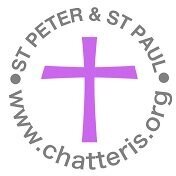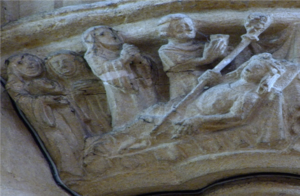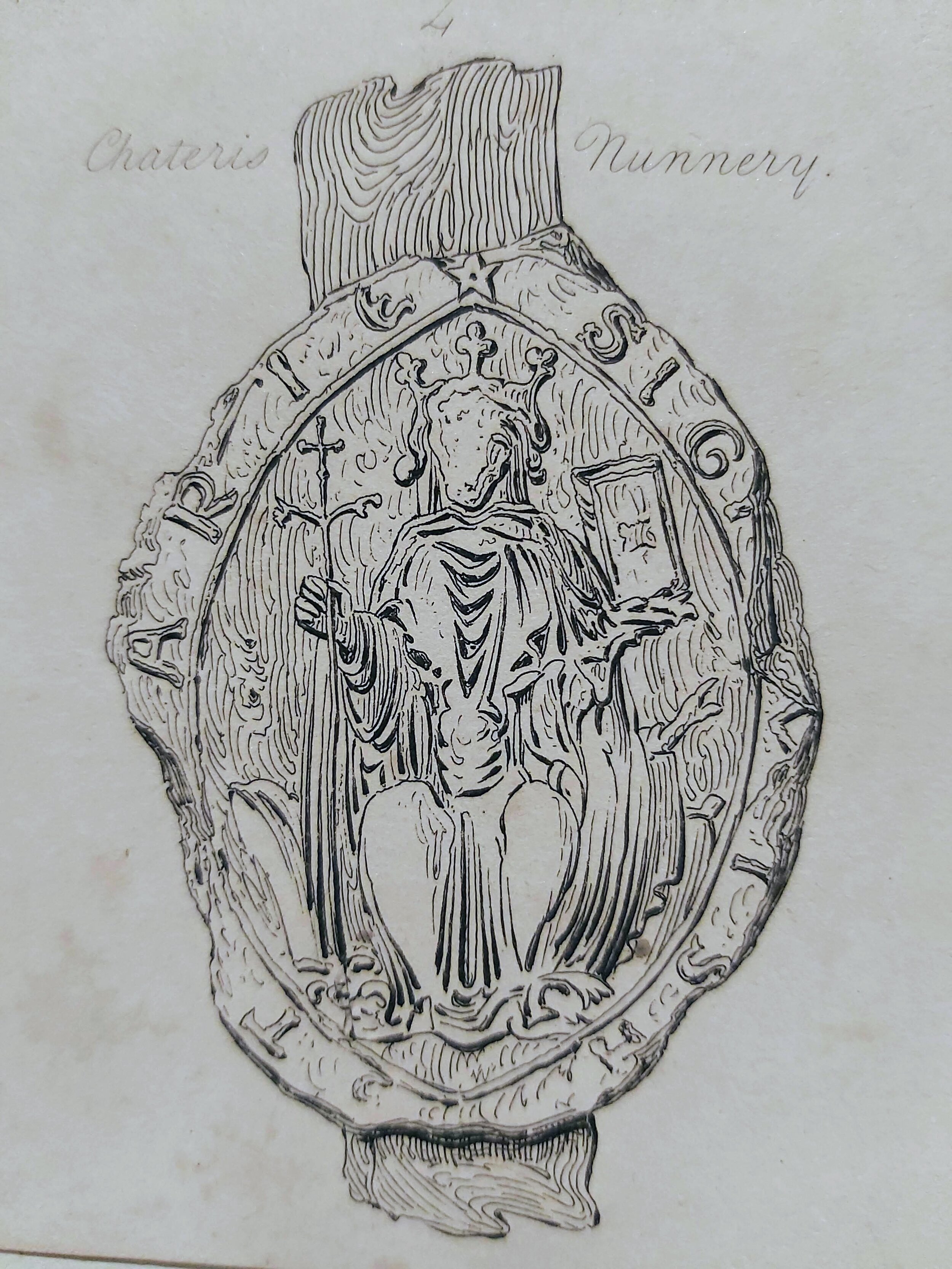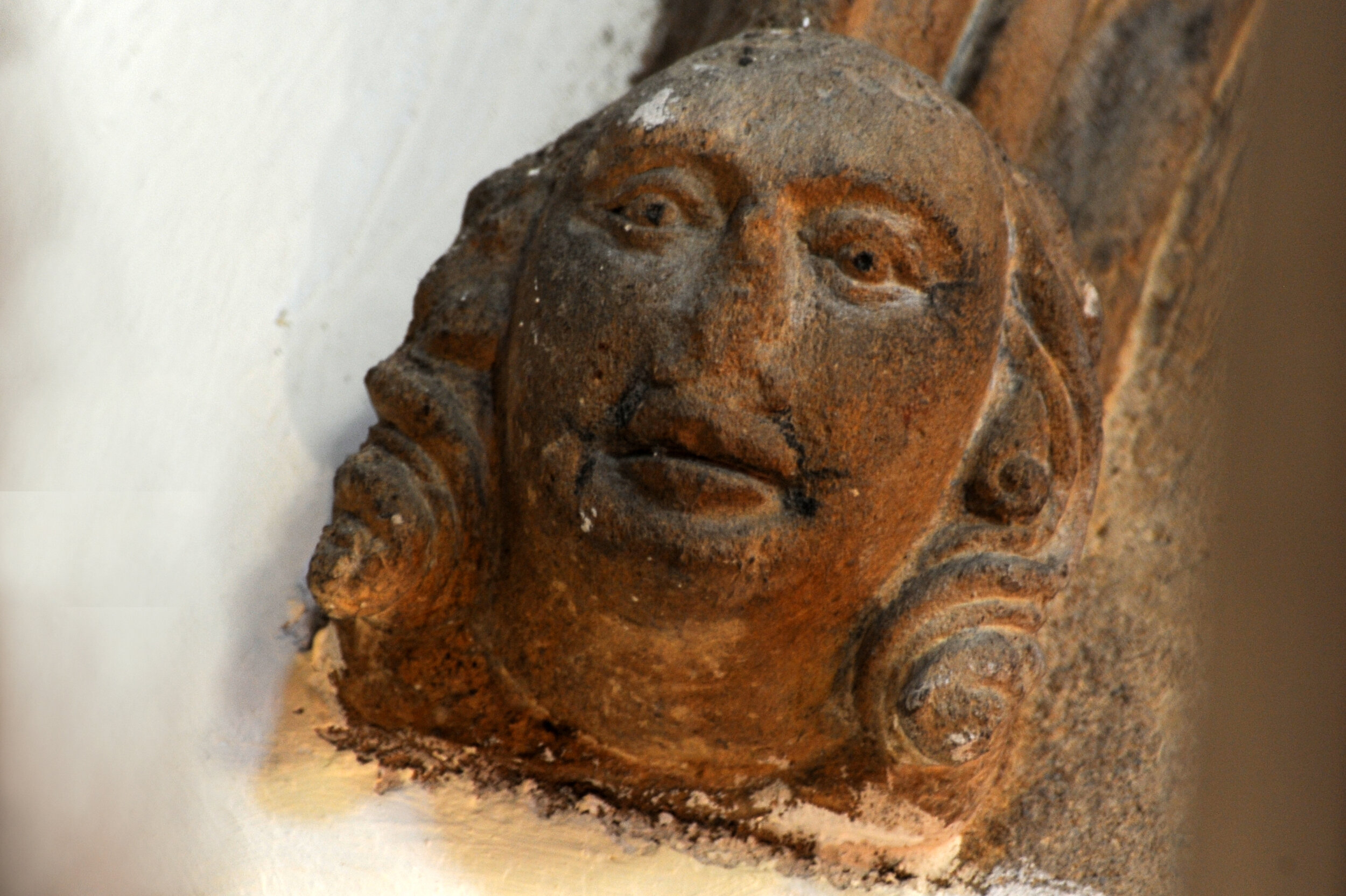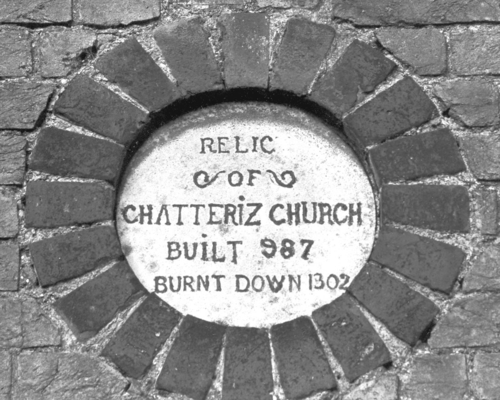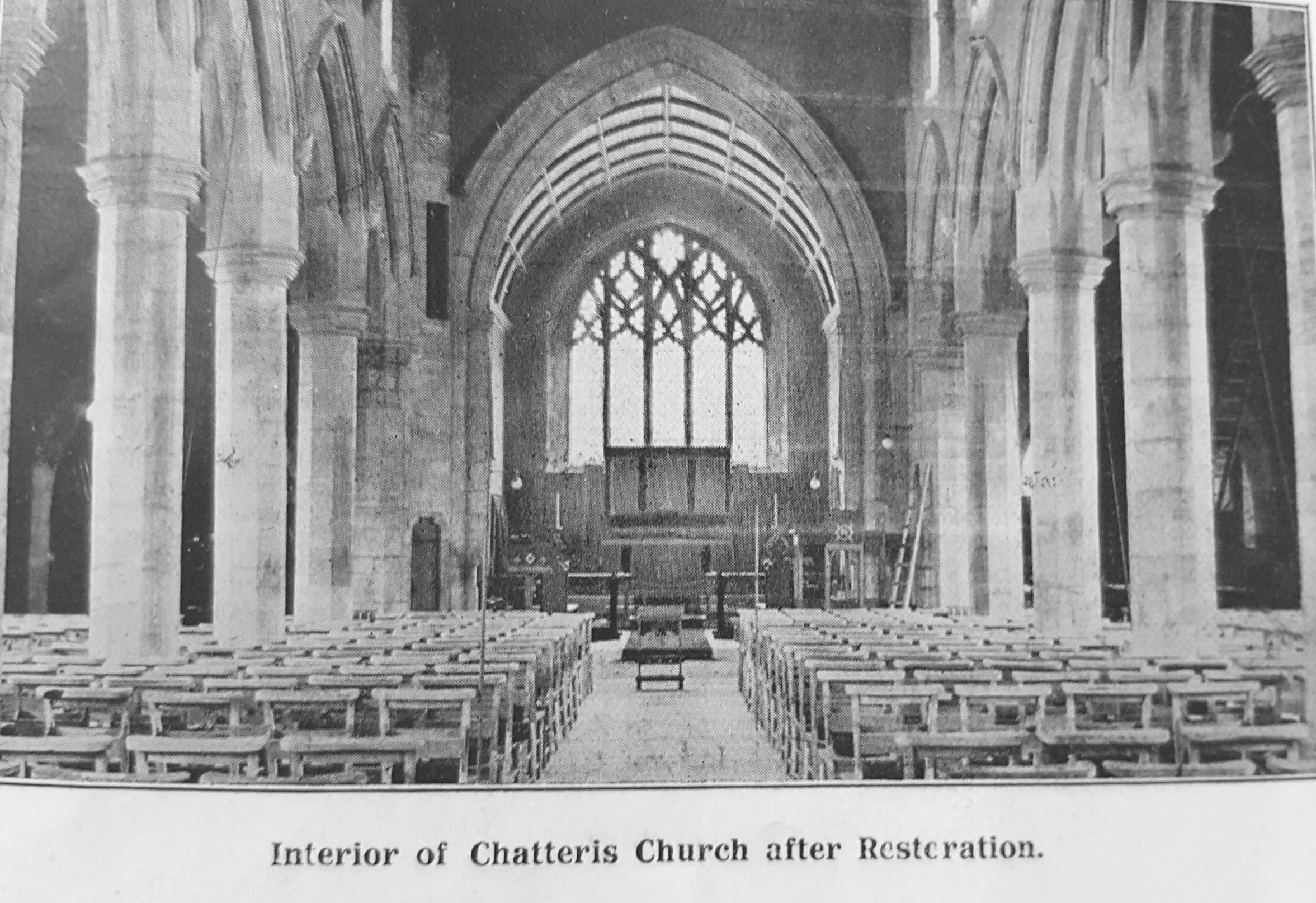A Prayerful Place in the Great Marsh
Chatteris is a traditional market town located in Fenland, Cambridgeshire. Our story begins in the Great Marsh with the original inhabitants and the first known resident of Chatteris, Huna the Hermit.
Bede’s History of the English Church tells how Etheldreda, daughter of the King of East Angles, married Tonbert ‘a prince of the south Gyrwes’. She managed to persuade her husband to respect her vow of perpetual virginity. After Tonbert’s death, Etheledreda was given the isle of Ely, where she founded a religious community that later expanded into a double monastery for both men and women with Etheldreda as the first Abbess. During her travels in Northumbria she came across a priest named Huna whom she employed as her personal Chaplain. He stayed with her until the end of her life to provide spiritual guidance and the teachings of the saints. When Etheldreda died, Huna conducted her funeral before retiring from Ely to seek out a solitary life of prayer on another isle in the fens. His place of residence came to be known as ‘Huneia’ (later known as Honey Hill or Honey Farm which can be found on the north side of Chatteris on the road to Manea). There were accounts of healing miracles in this place so a shrine was built and the body of this local saint venerated for three hundred years until his relics were taken away to Thorney Abbey. St Huna was the first recorded resident of Chatteris.
Chatteris was an isolated island in the Great Marsh, making it an ideal place for retreat. The fen territory was a borderland, subject to violent incursions from all sides. In spite of the inhospitable reputation, both Tonbert and Huna give us some indication of the extent of the Christianization of the local tribes during the sixth century. Records indicate that the gospel had been established and that Chatteris was a known place for Christian worship by the ninth century.
The modern name Chatteris derives from the Anglo-Saxon CAETERIC; CETO (a wood) and RIC (a river). Medieval records aimed at a phonetic spelling, including ‘Chatriz’ or ‘Cietriz’ with a soft ‘c’. The Chatteris river was the Old West Ware which came down through Somersham by the Ferry and was the principal way by which Chatteris could be approached before the draining of the fens. For more information about the ancient history of the area, we recommend contacting the Chatteris Museum.
The Foundation of Chatteris Abbey
Chatteris Abbey, built in 980, was dedicated to St Mary; its foundation was part of the revival of monasticism under the Benedictine rule which had been initiated by Dunstan. Religious communities like the one in Chatteris, did not encourage solitary habits but various communal services ordered the day with rhythms of prayer, learning, work and rest. These new spiritual communities were also responsible for the first efficient farming of the fens.
The first Abbess of Chatteris was the lady Ælfwen; ‘a devout woman who founded a nunnery on a copped ground encompassed with fens.’ (Camden, ‘Britannia’). A sculpture of lady Ælfwen can be seen in the rafters above the pulpit of Chatteris Church. Lady Ælfwen was the youngest daughter of Æthelstan and had been foster-mother to King Edgar-the-Peaceful. Her father, an ealdorman of the East Angles, was one of the most powerful theigns of the eastern Danelaw. Following Æthelstan’s death in 956, numerous estates across East Anglia were left to his family and many were subsequently given to the Church. (The key document for this is the will of their father, Aethelstan Mannessune.)
Lady Ælfwen’s eldest brother was Ædnoth, the young Worcester monk whom Oswald brought with him to supervise the construction of Ramsey Abbey. Ædnoth was later installed as the Abbot of Ramsey before being appointed the Bishop of Dorchester. Ædnoth and Æelfwen agreed to provide their ancestral land in Chatteris to support a small cell group of nuns. Income from their other estates was used to endow this new foundation (eg. Over, Chain, and Barley). Lady Ælfwena was installed as the first Abbess of Chatteris Abbey in 980. (Chatteris museum holds carved abbey stones, a charter and seal, an artist’s impression of the abbey layout and extracts from the nuns Cartulary).
Bricstan, the exemplary Chatteris ‘Miracle Man’
In 1109, the Diocese of Ely was created out of part of the Diocese of Lincoln. The first Bishop, Hervey le Breton (1109–1131), tried his best to inspire Christian faith and revive interest in monastic vocations. He wrote an hagiographic account of the Chatteris ‘miracle man’ named Bricstan, a free tenant living with his wife and family in Chatteris in 1115. Bishop Hervey used Bricstan’s story as an example for others, stating that he was someone who was “content with what he had, and meddled not with what belonged to other.”
When Alan de Walsingham designed the new tower of Ely Cathedral, he had carved on each of the eight supporting pillars an event in the life of St Etheldreda. One of these events shows the releasing of a man from prison. The Chronicles of Ely tell us that there was a money lender in Chatteris named Bricstan, who had a serious illness. Being in great pain, he vowed that if only God would make him well and strong again, he would become a monk at the convent of St Etheldreda. He did recover from his illness and upon discovering he had a vocation for prayer, Bricstan presented himself to the Abbott in Ely; prepared to submit himself to the rule of St Benedict and assume the habit.
As news of his faithful example spread, an unscrupulous agent of the king, named Robert Malarte, brought a slanderous accusation against him apparently to conceal his own robberies from the King. Not knowing the truth, the Abbott of Ely was left with no choice but to have Bricstan stand trial in Huntingdon. Even as Bricstan pleaded his innocence, the court made sport of him for being “somewhat corpulent, short of stature, and had what one might call a homely face.” Bricstan was unfairly judged guilty by his appearance and sent to the Tower of London, where he was put in chains and tortured. In his sorrowful state, he never stopped crying out to God for mercy.
After five months in prison, praying and crying out to St Benedict and St Etheldreda, whom he vowed to serve, the following miracle took place:
The dungeon was filled with a bright light and three shining figures so that Bricstan had to shield his eyes. St Benedict and St Ethelreda and her sister, Sexburgh, appeared in his cell to ask Bricstan if he wanted deliverance. Etheldreda then instructed Benedict to “do what was ordered by the Lord.” At this, “the venerable Benedict laid his hand on the fetters, and they fell in pieces, so that the prisoner's feet were released without his being sensible of any act, the saint appearing to have shattered his chains by his word alone.” He then threw the fetters to the ceiling, making a noise that alerted the soldiers who were lying on the floor above. Fearing that prisoners were escaping, the soldiers rushed to find the gates untouched. A prisoner in the cell with Bricstan spoke of several people coming into the dungeon with a very bright light although he did not hear the words they had spoken. In the morning, news of the miracle man reached Queen Matilda of Scotland who was in London city at the time. She immediately sent the command that Bricstan be released. After telling the Queen of his story, he was freed and went to all the religious houses throughout London sharing the news before being obedient in living out his calling at the monastery in Ely. His broken fetters were later displayed on a pillar in Ely cathedral reassuring every poor soul who looked on them of God’s constant care and protection. Tea towels were later printed with the picture of the chains as mementos for tourists.
One Church or Two?
A relic from the stone foundation of the church remains from 987 (see photograph above) but the Parish Church itself was not mentioned in any official records until 1162 when the living for the church parochial of St Peter and St Paul was given by Bishop Neil of Ely. This gift of patronage indicates that it was expected that the Abbey would take full responsibility for the ‘living’ (payment) for a priest conducting services for the town. The living remained the gift of the Abbey until the dissolution in 1536. Afterwards, the living passed over to the nuns of the Manor House and then the Lord of the Manor.
The Doomsday Book of 1086 tells us that Chatteris Abbey owned land at Over in the Isle of Ely, Foston, Burwell, Barrington, Shepreth and Orwell in Cambridgeshire; Kersey in Suffolk and Barley in Hertfordshire. Even so, the rents were small and the first Saxon buildings could not have been very impressive. The earliest Abbey probably consisted of a church made of wood, with the other buildings scattered around it. At some point the there would be have been a rebuilding of the popular Norman style and this may have led to the Abbess’ appeal for help to King Henry I in 1131. In response, the king handed responsibility for the Abbey to Bishop Hervey of Ely. The consequent lack of royal patronage and lack of tithe estates caused Chatteris abbey to become a comparatively poor foundation. Even so, there was still a desire from the monastery itself to keep standards high. In 1217 Prior Roger of Ely revealed that the annual Living for the priest amounted to £4. In 1298 the Bishop of Ely nominated an illiterate girl called Idonea as a nun for the Abbey. It was reported that the Abbess did not welcome this appointment as her lack of skill and competence hindered her capacity for work as a ‘choir nun’.
During 1302 a great fire swept through Chatteris and destroyed much of the town including the Abbey and the original parish church. All that was left from the fire were sections of the base of the church tower and the 13 c octagonal font. The first recorded incumbent was a priest without a building - Richard de Carton. Still, the Revd Richard de Carton was instituted with a regular stipend and recorded as present in 1345 for both the election of the new Abbess and Canon Hugh Seaton’s visitation on behalf of the Archbishop. Canon Seaton’s audit of both the parish church and the Abbey church indicated financial and other difficulties including disciplinary problems which hindered the rebuilding. Dogs, falcons and small birds were no longer to be allowed in the choir (!). Servants were to be dismissed for scandalous behaviour and not to be readmitted. The Revd Richard de Carton died in 1349; the year the Black Death swept through Cambridgeshire leaving forty-one priests dead. The church was not fully restored, with its new tower and octagonal font, until 1352 when it was re-consecrated by Bishop Thomas of Ely.
A later visitation in 1528 records ‘a pair or organs’ inside the parish church. It is possible that one had been transferred from the Abbey Church even though it was never recorded in the Abbey inventory. During the tenth century there was a great organ-building tradition in the Benedictine movement as a call to corporate worship. Chatteris Abbey maintained strong links with Ramsey Abbey and at one time copper pipes were given for a great prominent organ which was to be played on high days and holidays (by Sr Oswaldi).
The church parochial of St Peter and St Paul was for the wider town while the nave of the Abbey Church of St Mary was favoured by the nuns, their servants and connected families. The Visitation in 1538 describes the Abbey church as a two story building, extended from the north transept. Upstairs was the cubicled nuns’ dormitory and below were the offices. There was a guest house on the western side. Included within the grounds was an infirmary, a bakehouse, brewery, almonry, mill, cattle shed and barn. There were eleven nuns and twenty servants. Patronage for the the Abbey and the manor was then given over to St Benet’s College (now Corpus Christi in Cambridge).
Due to its poor state, the Abbey survived the first wave of closures but surrendered to the king's commissioners in 1538. A foundation which had existed for 500 years, ceased and virtually disappeared from town. Fourteen local families used the Abbey church of St Mary but were instructed to join with others at the nearby St Peter and St Paul's Church. It has been conjectured that due to the short space between them, the parish church may have been the Abbey church although Claire Breay's Cartulary of Chatteris Abbey discounts this idea, citing that historical documentation clearly defines two separate churches.
The empty convent buildings were completely demolished altogether in 1847. There remains a few fragments of the perimeter wall by the corner of Wood Street and South Park Street. A few carved stones from the Abbey ruins have been preserved in Chatteris Museum and others can be found in various houses in town. Several memorial tablets from the old church of St Mary’s remain along the wall of the present church of St Peter and St Paul.
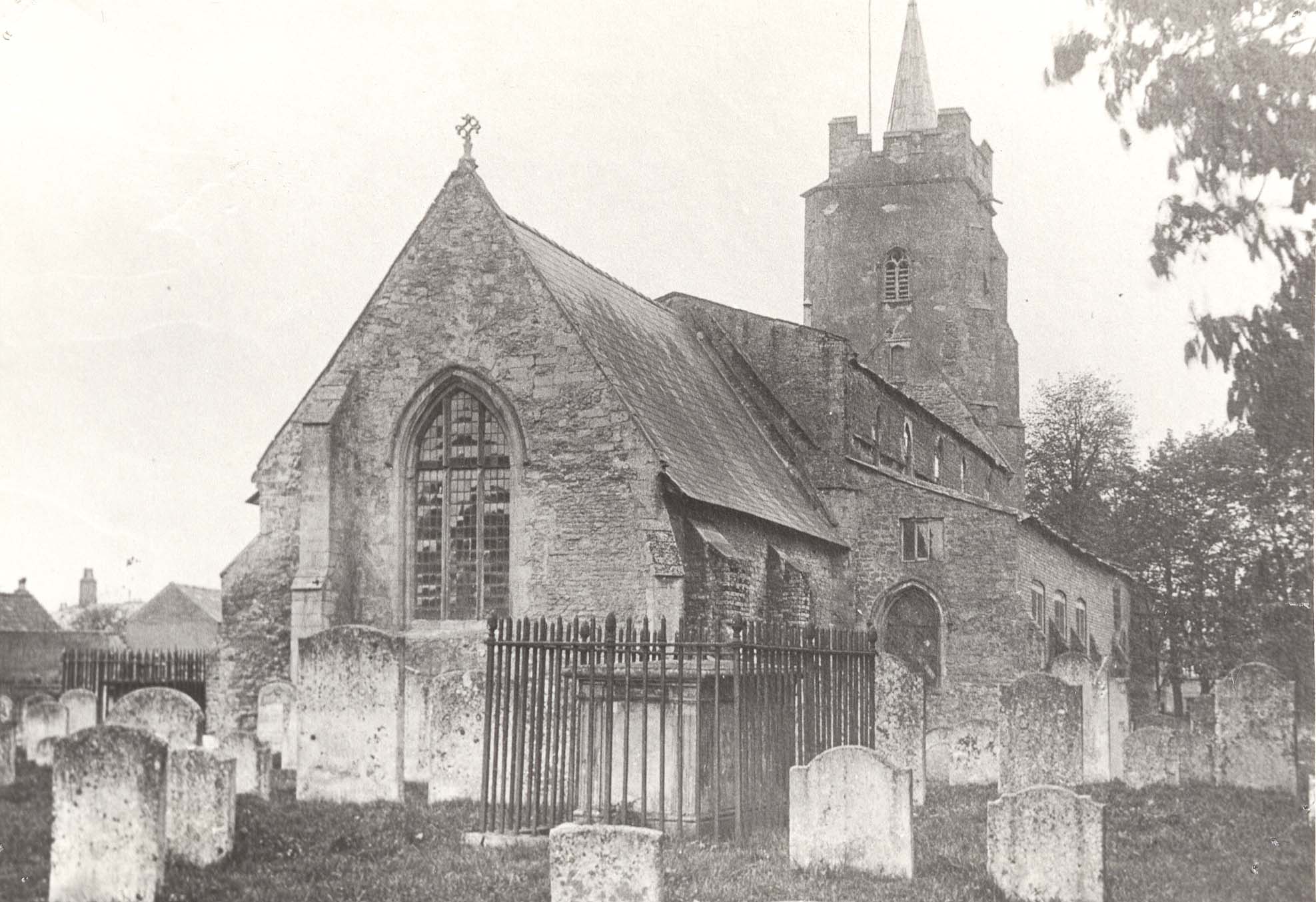
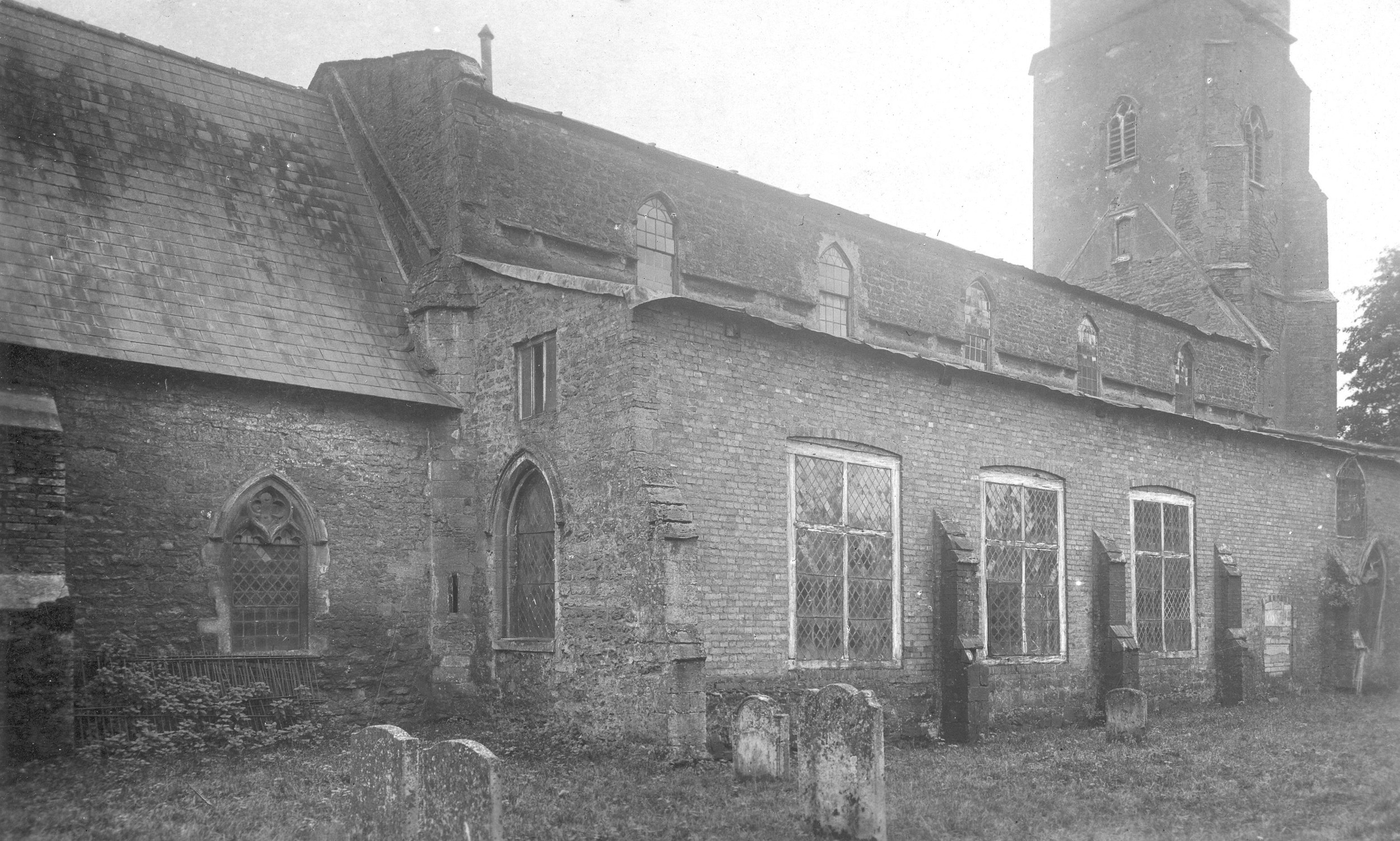
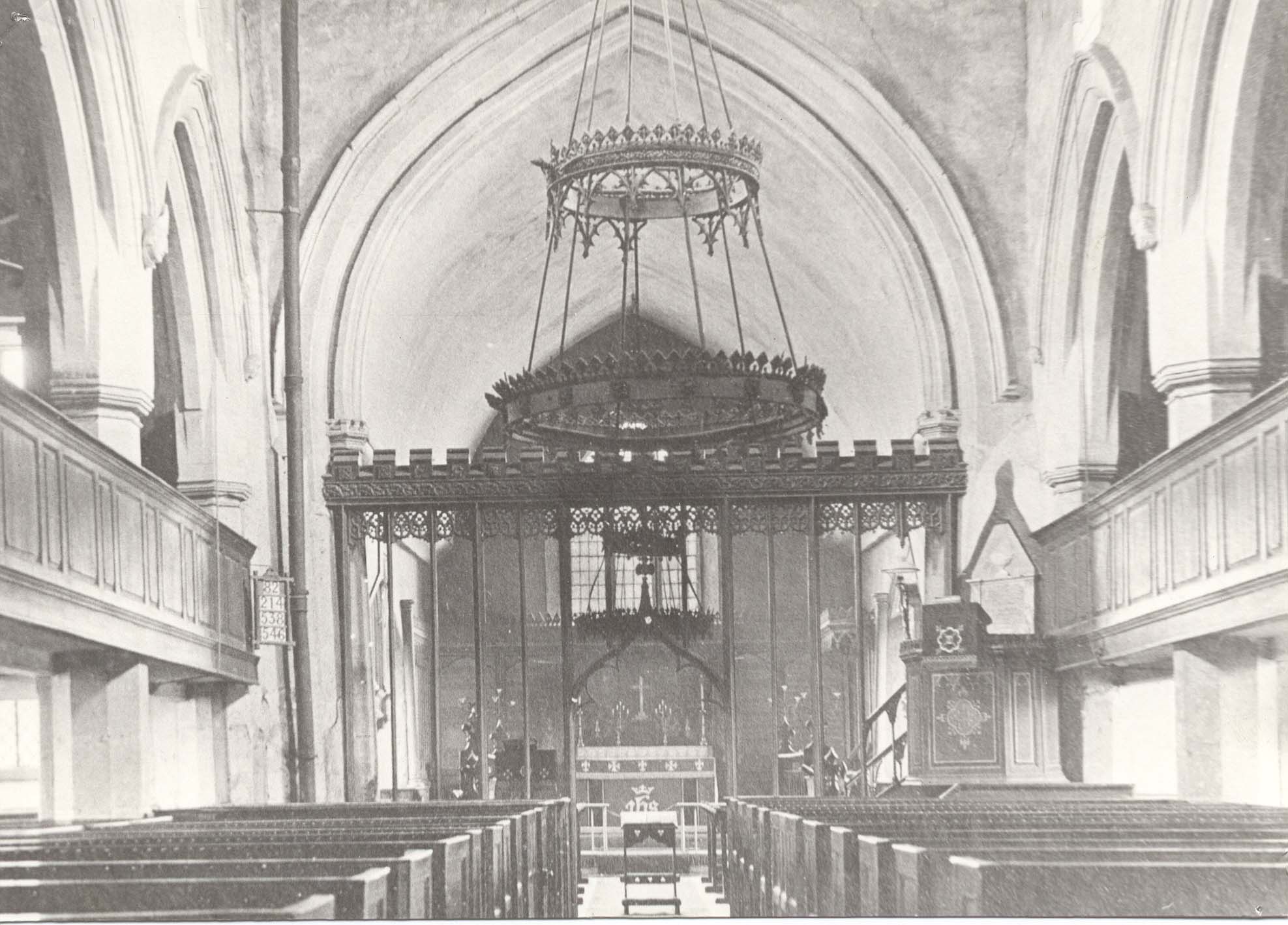
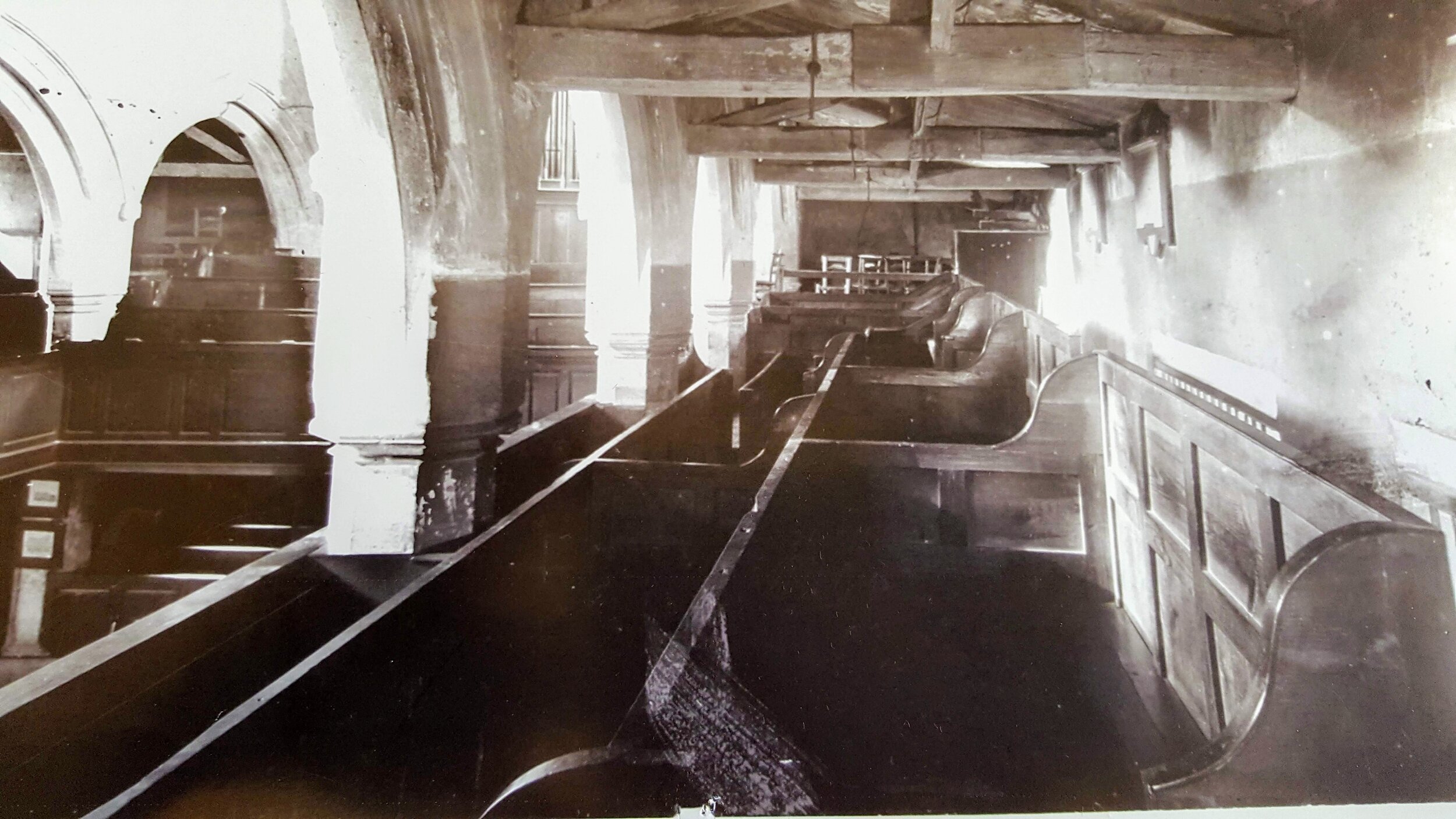
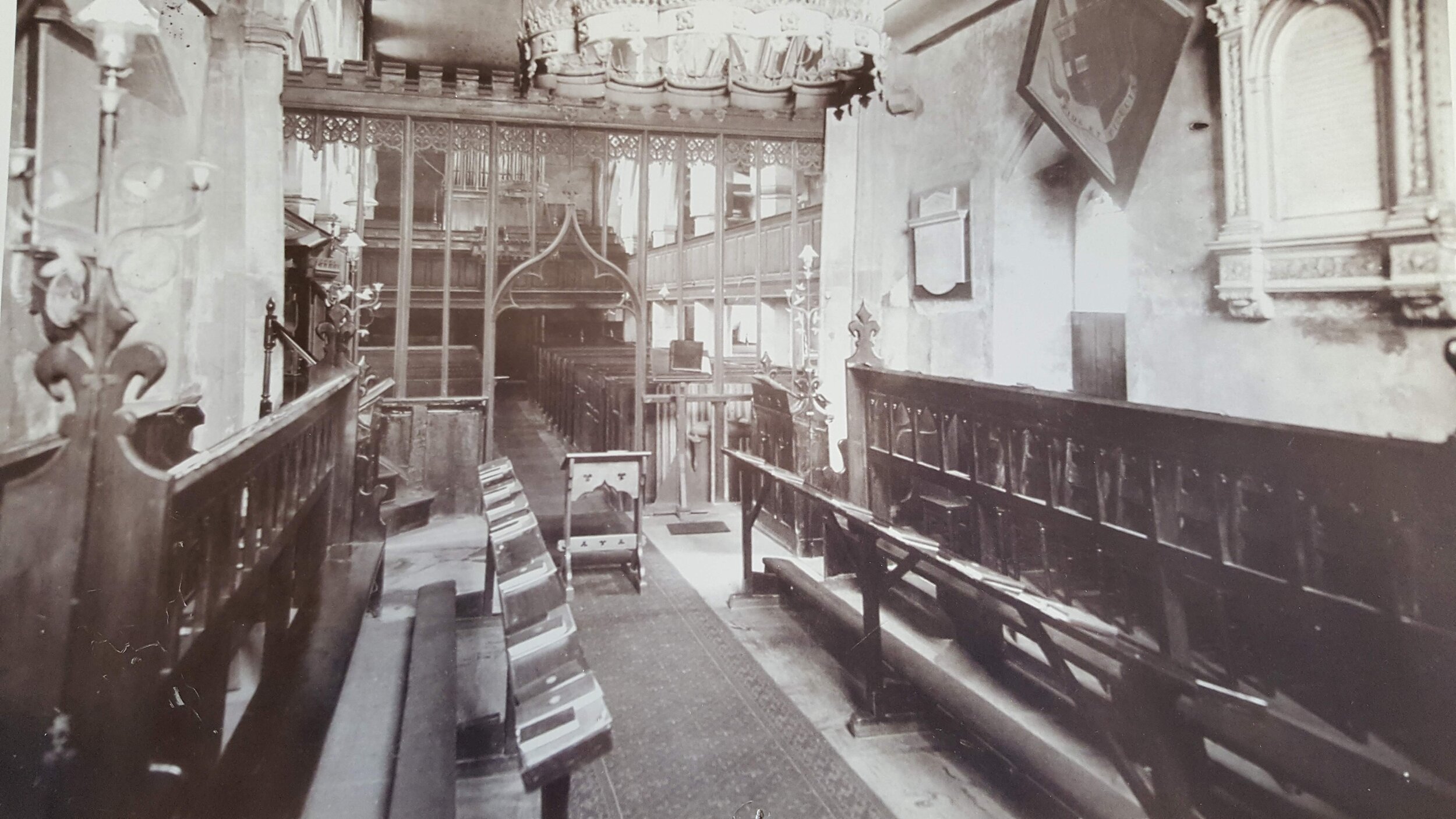
Draining of the Fens
By 1563 the town included a total of 206 householders. Chatteris must then have contained about 1,000 inhabitants. Improvements needed to be made for the church as it became the focus for a growing town. The south west porch and lead spire were added in 1594, the date inscribed high inside the tower.
Chatteris remained an isolated place until Elizabeth I saw the value of draining the fens. Nothing changed however until the Duke of Bedford took matters in hand. In 1626 the Duke gathered support from a group of investors and called in the Dutch engineer, Cornelius Vermuyden, to devise a series of ditches ("cuts") and dykes that reclaimed the rich peat soil beneath the waters to transform the landscape. Although these changes were initially resisted by the so called ‘fen tigers’ who tried to sabotage the work, the draining project provided plenty of work for locals as well as for those who migrated into the area; including French Huguenots, Quakers and Irish prisoners. As the great marshlands were reclaimed, the Fenland soon became known for its rich farmland and supporting industries.
Civil War & Dissent & Development
During the seventeenth century, differences of views about the nature of the church were a cause of the English Civil War (1642–1649) that resulted in the Puritan revolution of the 1640s and 1650s. The Revd George Otway was vicar during the Civil War. Most clergy in the area were sympathetic with Cromwell’s men and his ideals spread quickly. In 1643, William Dowsing visited parishes to level the steps to communion tables and remove the rails to ensure that the priest was not elevated above the parishioners.
In 1644 the Earl of Manchester, Edward Montagu, appointed a committee to eject the unsuitable or ‘Popish’ ministers. The Revd Otway in Chatteris was rejected but paid ‘for the services which has has done for the church.’ He was replaced by The Revd Thomas Dearslie, who died in 1665, the year Plague swept through England. When the Archdeacon made his visitation (in 1685), he ordered the chancel to be restored, the floor to be paved, windows mended, the font cleaned and the roof leadwork to be made good. The Revd William Strong (Jr) was appointed Vicar of Chatteris, on 20th Nov 1666 a position he retained until he died and was buried in Chatteris on Nov. 21, 1689.
Following the 1688 "Glorious Revolution" a Toleration Act was passed that granted freedom of worship to those Protestants whose consciences prevented them from attending Anglican services in parish churches. In Chatteris, the Baptists hired a barn in Lyons Yard, West Park Street to hold formal public meetings in 1783, . The Strict Baptists were later founded in 1819 and they built Zion Chapel in Park Street. The Strict and Particular Baptists were founded in 1800 and built Salem Chapel in Huntingdon road. The Congregationalist started their meetings in East Park street in 1838 before joining the United Reformed Church. Methodism, originating from a revival movement within the Church of England, became a separate denomination after John Wesley's death. In Chatteris, the Wesleyans built their church on New Road in 1815 and later became known as the Methodists. Each of these individual congregations later dissolved or else banded together to become the present day Emmanuel Church in 1990. Members of for the Society of Friends (i.e. the Quakers) originally came from the Netherlands to work on the draining of the fens in 1703. Their Meeting House located in Ash Grover was used from 1703 - 1920s. The Salvation Army Fortress was built in 1900. Since the 1980’s the Salvation Army, Emmanuel church, and the Catholics have worked in partnership for mission with St Peter & St Paul’s church and are known collectively as Chatteris Christians Together (CCT).
Over the centuries, the population of the town continued to grow around the parish church. There are two hatchments on the wall, smaller of them dating from 1673. The larger one has a plate indicating that it is of William Chafy but it is probably of his first wife Annette, daughter of the Bishop of Cork, whose memorial is on the north wall. Box pews and a Victorian rood screen were added around 1720. Tower masonry and flat nave ceilings were also plastered.
Records indicate that the building materials were stored in ‘the old school house’ a reference to the original school (on the site of the present Bricstan Hall), replaced about 1736 by the school which eventually came to be St Peter’s Social Club (situated in the present day Church Lane car park). The original clock (now replaced) was first dated before 1726, as are five of the six bells that hang in the tower. The fire engine house was purchased in 1798.
Resident Vicars
The first resident vicar for Chatteris was the Rev. William Holden (1772 – 1803). Revd Holden was described in the Piggot’s Directory as ‘a gentleman highly esteemed, not only by his own congregation, but by the whole population of the parish’.
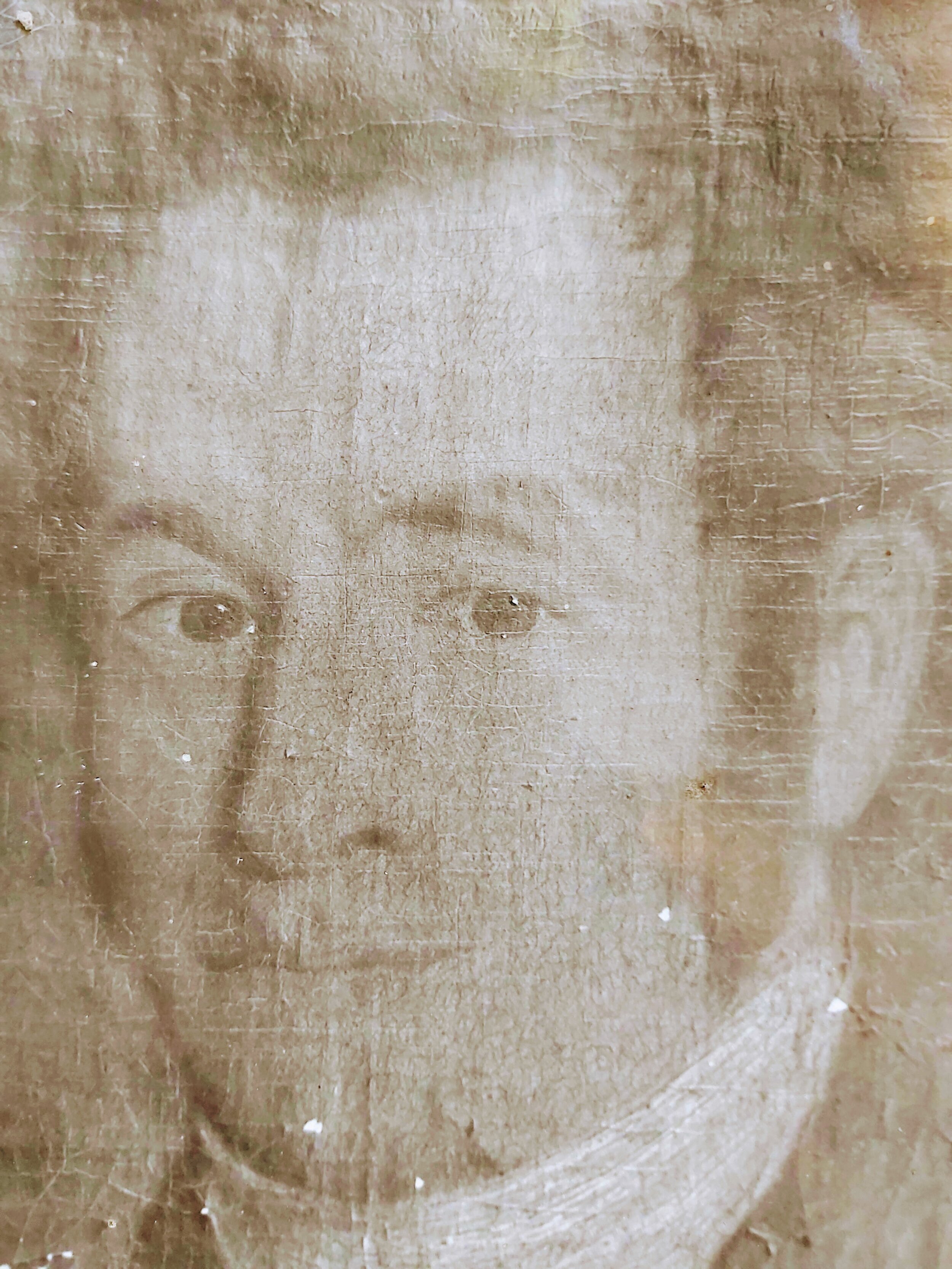
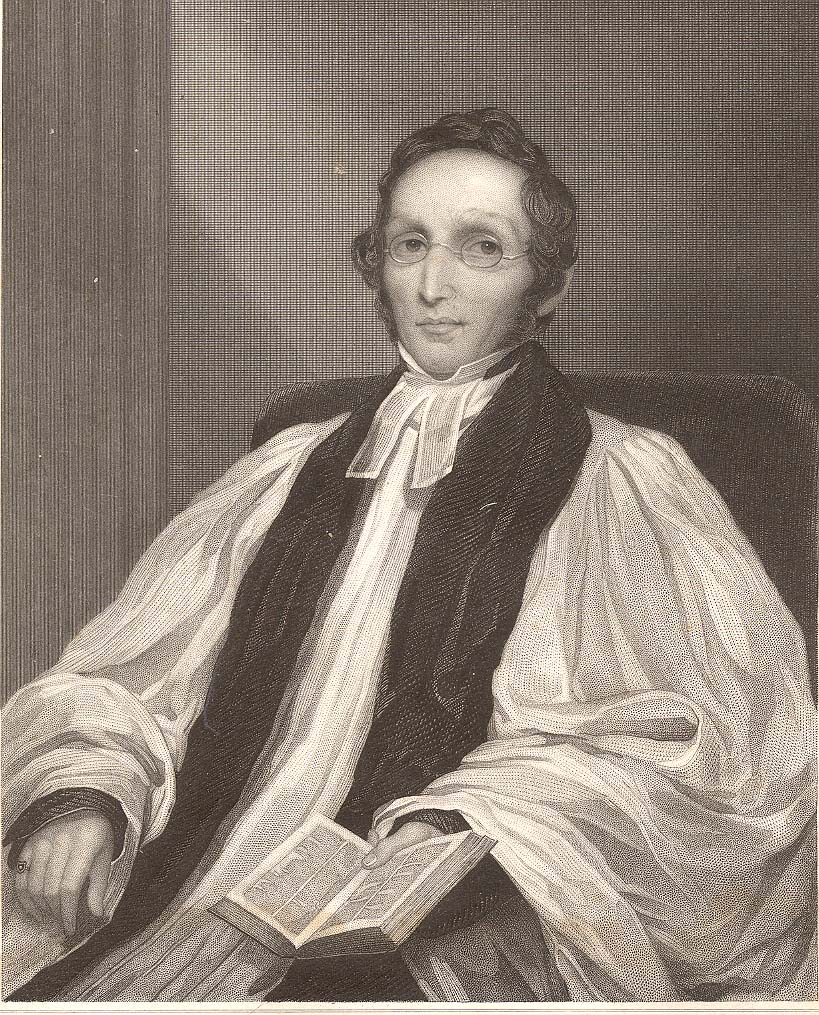
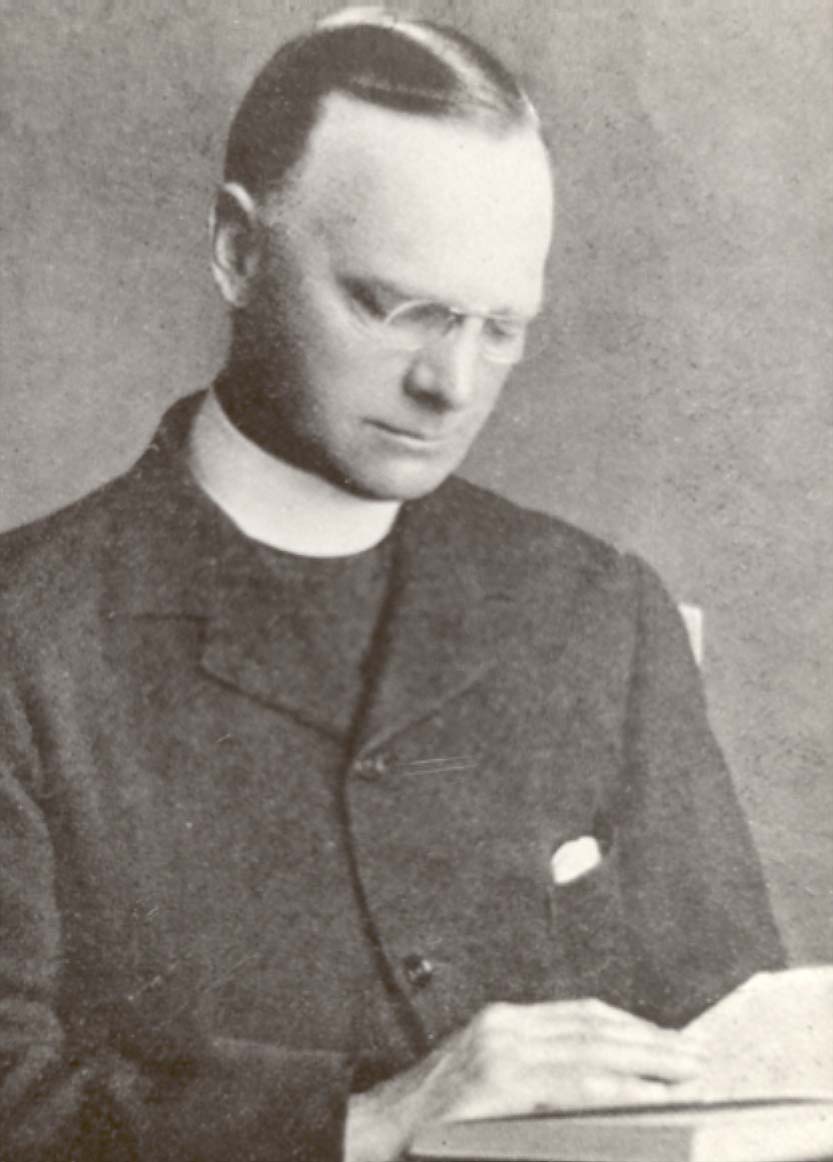
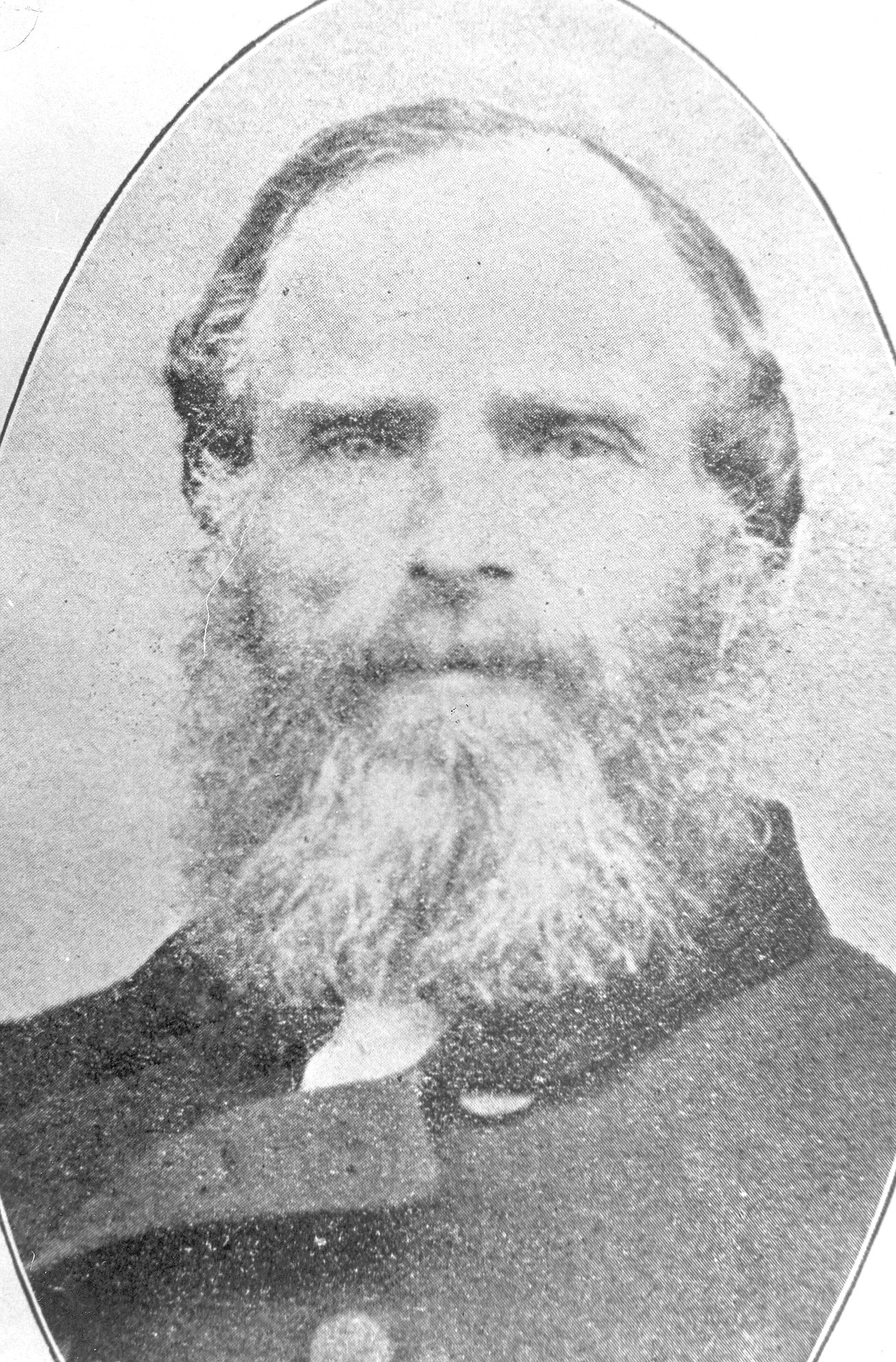
In 1803 Lord Seymour, then Lord of the Manor, sold the patronage for the parish church to the Revd Robert Chatfield (1803 - 1845) of Croydon who became vicar of Chatteris. A large new vicarage was built on the High Street to house his family which included his wife, Susannah, their six children.
Alongside his parish duties, the Revd Chatfield held the office of Justice of the Peace (J.P.) for the Isle of Ely and also (J.P.) for Cambridgeshire. He was given an honorary doctorate but in Chatteris was best remembered for setting up the building a new National (free) school ‘for the education of poor children’ in 1819. He supported the school and gave his annual donation of beef and plum pudding to the scholars in the parish. In 1824, Revd Chatfield arranged for the building of an infant school on the north side of the church yard, the site of the present day Church Lane car park.
A clipping from a local newspaper described Revd Chatfield as follows: “On the day preceding Christmas day, a liberal supply beef and mutton was distributed to every poor family of that parish, by that benevolent gentleman; and it is hoped every poor person partook of a good dinner on Christmas day from Rev Dr. Chatfield, on behalf of the Benevolent Society 'held in that town. The portion of scripture from whence he chose his text, was the 4th chapter of the First Epistle John, and part the 7th verse, Beloved, let love one another: for love of God.' (source: Huntingdon, Bedford & Peterborough Gazette, East England. 02/01/1830).
Inside the church building, Chatfield arranged for the building of a west gallery, linking the other galleries in 1804. It was called the ‘singing gallery’ and eventually became the site for the organ. Before the organ, a band of wind instruments accompanied services with hautboys (oboes), bassoons, clarinets, flutes, violins, and cellos from the minstrel’s gallery. During this time, Sextons, or vergers, were appointed and paid wages from his own pocket to assist, look after the grounds and the church building. Chatteris sadly suffered badly from the 1832 epidemic of cholera. As the church grounds filled up, it was decided to purchase land for New Road Cemetery which remains in current use.
The Rev. Michael A. Gathercole (1774 - 1886) arrived in 1845 when the population of the town was 4800 with fine houses, good shops, fifteen inns and forty-three beerhouses. It was a period of riots, several waves of cholera and social unrest. Inspired by the socialist teaching of Robert Owen, John Hudson, an ex Methodist minister, published his dissent - socialist, anti-establishment and anti-religious views - in several Fenland papers in order to appeal for more working class settlers to join his Colony. Members of the Manea Colony came from all walks of life, and all parts of England, with the hope of one day owning their own home. Due to the conflicts caused by Hudson’s publications, he started his own socialist newspaper called the Worker Bee. His colony closed after four years, ending in moral failure and bankruptcy. Hudson fled in shame to America in 1884.
The following year, the Revd Gathercole arrived with his wife, Frances to live in the Vicarage at 15 High Street (the location of the present day war memorial). Gathercole, himself a convert from Methodism, the dissenting religion as he called it, took it upon himself to expose the ‘impiety’ of dissent while promoting as widely as possible the teachings of the Established Church. With a singleness of purpose, he set to work immediately undermining any ecumenical work in the town. Furthermore, he insisted that any members of the parish church that indulged in alcohol or found guilty of any schism would be stripped of their membership. He was an avid writer and editor of various church publications including the first church newspaper called ‘The Churchman.’ which obtained extensive circulation both nationally and oversees in India and the Americas. It was particularly enjoyed by the working classes and raised considerable sums of money in the support and welfare of the national church. Nevertheless, the controversy he created, caused lawsuits to follow and many personal tensions arose within the parish. After various complicated negotiations, by 1852 Gathercole became his own Patron, responsible for his own ‘living’ as his debts mounted.
During this time the Church building fell into disrepair. A visitor in the 1880s wrote... "windows, concealed by giant nettles. ...inside - atmosphere of the earth. ... Dust was in evidence. ... the most depressing church." The roof leaked, the masonry was crumbling and weeds grew between the flag stones of the church floor. It was in a sorry state! It was decided to close the church burial grounds in 1855 because they were full and a cemetery was built on new road. In 1857, following the birth of his sixth child, Gathercole’s first wife, Frances, died. He married his second wife, Sarah. During this time, his two brothers moved into the vicarage, along with a curate.
Gathercole was driven by his sympathy for the poor and sense of justice. In 1864 a large stack fire broke out on Mr. Billips's farm at Hive End and quickly moved throughout the town. It caused the death of a 7-year-old girl and the destruction of upwards of 100 houses, leaving over 400 people destitute. On the night of the fire, Revd Gathercole called an extraordinary meeting and chaired the organization of town-wide relief committee to provide accommodation for those made homeless. The total damage was over £10,000, and a relief fund of £300 was subscribed for the sufferers.
Gathercole added his voice to the outcry against ‘Public Agriculture Gangs’. Inclosure was effected by Acts of Parliament in 1793 and 1809, protecting the liability of large land owners looking after poverty stricken families of workers living on their land. An alternative workforce emerged through the creation of public agriculture ganges using temporary contracts with independent gang-masters who, for the lowest possible rate of pay, employed and brought in men, women and children as young as six years old to work on the fields. Gathercole joined with others in writing to national newspapers about the disgrace of this corrupt practice. The Revd Gathercole died on the 11th December 1886 and was buried in the family catacomb in Chatteris church yard. In 1867 the Gangs’ Act established a licensing system for gang-masters and curtailed the employment of women and young children.
The Restoration of 1910
The Rev. Henry F. Bagshaw (1901 - 1926) arrived in 1901 and set about to restore and repair the church with the help of his young curate, The Rev. McNeice (1909 - 1922).
Money was scarce but on Christmas Day 1904 the Revd Bagshaw announced a huge bequest from Robert Wright, son of their former Sexton.
Robert Wright left a legacy of nearly £5,000 in his will, which was an enormous amount at the time. Mr Wright had been a Chatteris chorister before emigrating to America where he built up a successful laundry business and made a small fortune. This legacy surprised and inspired the whole congregation, initiating a fundraising campaign for the balance needed to restore the church.
The church has always taken seriously it’s responsibility for the poor of the parish, providing money and goods for poor families. A Church Army captain was appointed as the first Lay Reader and given responsibility to evangelise and lead in reaching the town’s most deprived areas. By 1906 a cottage at Slade End was obtained as a Reading Room and a permanent building was erected for St Peter’s Mission. At the other end of town, the Horseway mission was set up in 1909. Community activities took place during the week with services held on Sunday afternoons by lay ministers. In the spirit of ecumenism, the Catholics were invited to use the Mission for their Sunday morning Mass.
In 1909 responsibility for the vicar’s living was obtained by Caius College, Cambridge, which helped raise the profile of Chatteris further afield. It was also the year building work began on the church. This was a century of enthusiastic expansion and growing confidence especially among the laity. Everyone had a part to play and there was a growing sense of purpose that the parish church was to serve the whole town. Services for uniformed organisations took place in the church and over twenty women volunteered as District Visitors from the church.
Faith deepened and the building took shape as much thought was given to the architectural history of the church. The tower was re-pointed in part, but is essentially the 1352 tower, though its lower courses are older. The rest of the building was re-built around the nave pillars with a new chancel and chapel. The box pews were removed and replaced with chairs on a new oak floor. The old chancel window frames were set in the new East End. The tower ringing chamber could be reached by a door inside the nave. The first peal on the six bells was rung on Easter Sunday morning 1910. After all debts had been paid, the Bishop of Ely came to re-consecrate the church and celebrate with the community in its restoration in 1916.
The World at War
The first world war (1914-18) hit Chatteris hard and a generation of young men were lost. In the center of the chancel behind the main altar, a large Memorial stained glass window was erected in memory of 158 residents of Chatteris who fell and was unveiled on the High Street by the Lord Lieutenant of Cambridgeshire and Isle of Ely on 1 October 1920. It is interesting to study and see the variety of nations represented by their flags. Many do not realize that one of the names on the memorial is for the vicar’s only son, Henry Kenyon Bagshaw Lieutenant, who died the 13 April 1918 at the age 26. The pulpit in Chatteris Church is dedicated to Henry. Another name on the memorial is for George Clare VC, known as Billy or ‘donkey’ for bravely carrying so many of his injured comrades back across no man’s land for medical attention. Before joining the 5th Royal Irish Lancers as a medic, Clare was a chorister. He died in 1918 at 28 years. He was awarded the Victoria Cross for outstanding bravery and his life is commemorated in a special window in the side chapel.
The Revd Henry F Bagshaw died in 1926 and was buried in Chatteris. The church was looked after by the curate in charge, the Revd N B Jones who ensured the Revd Bagshaw’s wishes were carried out with regards to the completion of a new rood screen, a stained glass memorial window, and the installation of a new organ. The new two-manual Harrison & Harrison organ was later installed in 1935, a fine example of a pneumatic action instrument. A local shopkeeper named Mr Harry Weedon served as the Church organist with Mr W Fletcher as deputy. Following from his father’s footsteps, Mr Tom Weedon stepped in and remained the church organist for over fifty years.
The Revd Samuel Hare (1927 - 1932) and Mrs Hare set to work encouraging support for all the good work being done by Mr Williams down at both the St Peter’s and the Horseway Mission. A Chatteris branch of the Mothers’ Union was founded on 13th October 1927 with Mrs Hare elected as the first Enrolling Member. Revd Hare used his connections to bring representatives to Chatteris for a large Mission Exhibit which was held inside the church. Revd Hare also served on the Committee for the British and Foreign Bible Society and eventually left to carry on this work full time. In 1930 Cromwell College opened.
The Revd George Estlin Atkins arrived in 1932. A young man himself, George attracted many young people to confirmation classes which took place in the church hall, the site of the present day car park. During this time, the church hall was in constant use as it had the best facilities in the town. It included snooker tables, a kitchen and toilets and was used for many groups and functions.
In 1938, The Revd Jack Hawthorn arrived with his wife Susan and their three children Ruth, Christopher and Margaret. They lived in what is now called the ‘old Rectory’ and with help from their household servants, were able to host large gatherings and church fetes on the Vicarage grounds. Sunday School was well attended at 2:30 pm in the afternoon and included a yearly prize giving and trips to the seaside. Within the Parish, Revd Hawthorn’s wife, Mrs Susan Hawthorn, also served as the Enrolling Member for the Mother’s Union and further afield as a Justice of the Peace for Cambridgeshire.
With the outbreak of the second world war, many young men from Chatteris signed up, with most joining the Cambridgeshire Regiment. Apparently, after arriving in Singapore the whole Regiment was arrested and taken away to a prisoner of war camp. Back home, evacuees from London arrived by train at Chatteris Station to make a new life for themselves in the fens. There was a great mixing of people and ideas which was reflected in the churches, as members from all the congregations met up for various functions and groups during the week. Apparently, the Revd Hawthorn’s sermons were thoughtful and learned, but he was known for being very ‘low’ in his church tradition. He was also very deaf so famously carried about his ear trumpet in a case as he rode his bicycle through the town. The Revd Hawthorn never drove a car but, several times a week, was known to cycle over to Doddington Hospital to visit anyone who was ill from Chatteris.
Sunday the 10th of January 1971, the BBC came to Chatteris church to broadcast Songs of Praise. Chatteris Church had a choir at this time but apparently they were not permitted to join in singing with the choir from St Peter’s in March. However, a Chatteris children’s choir from the King Edward School was invited to sing. The program was a great success and enjoyed by the whole town.
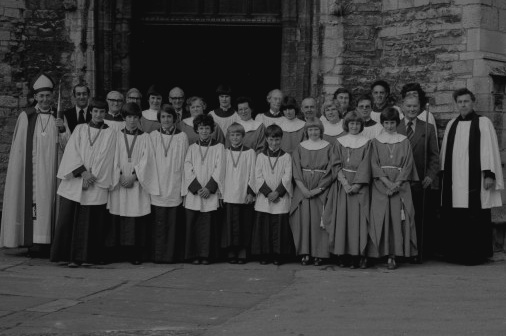
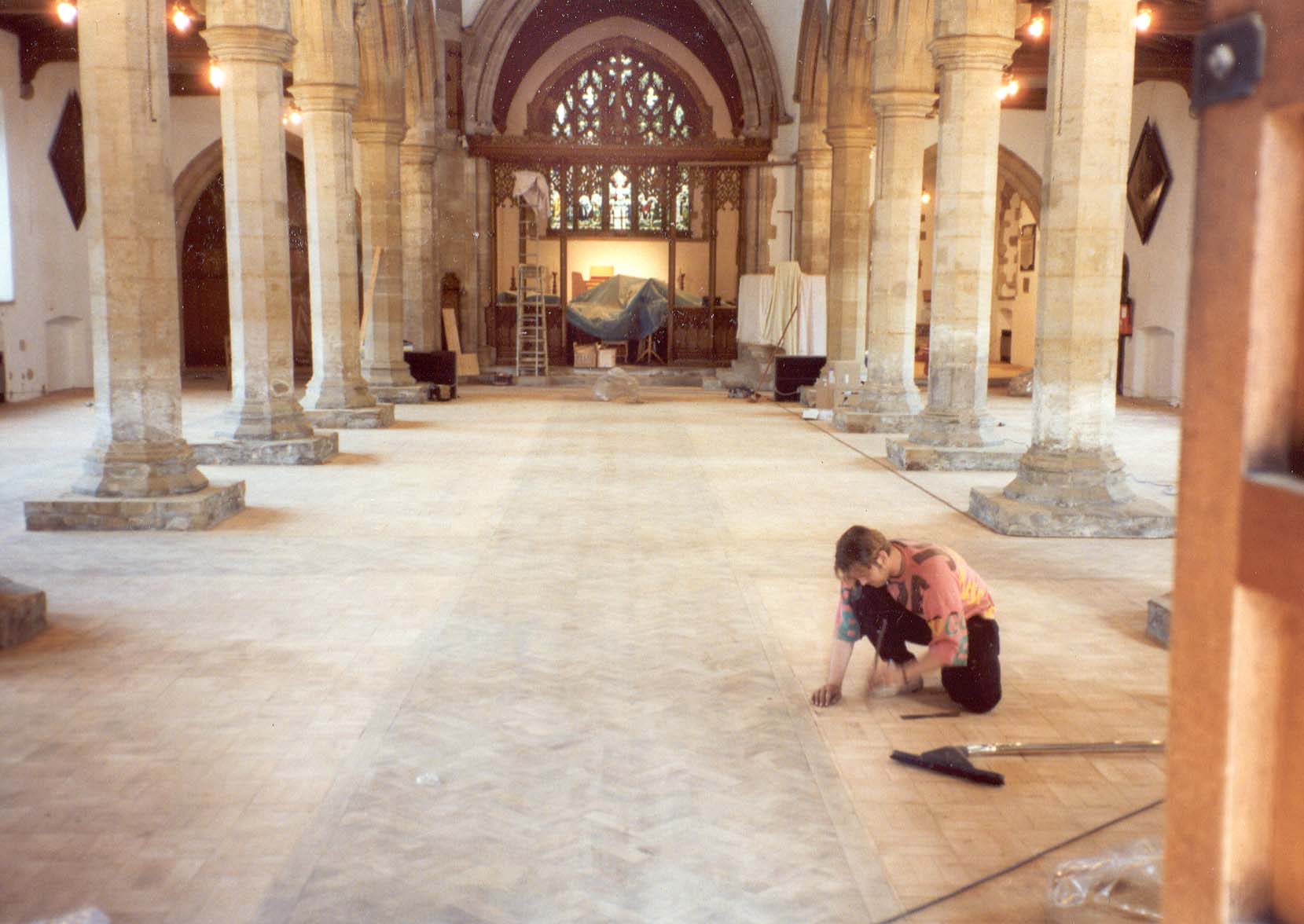
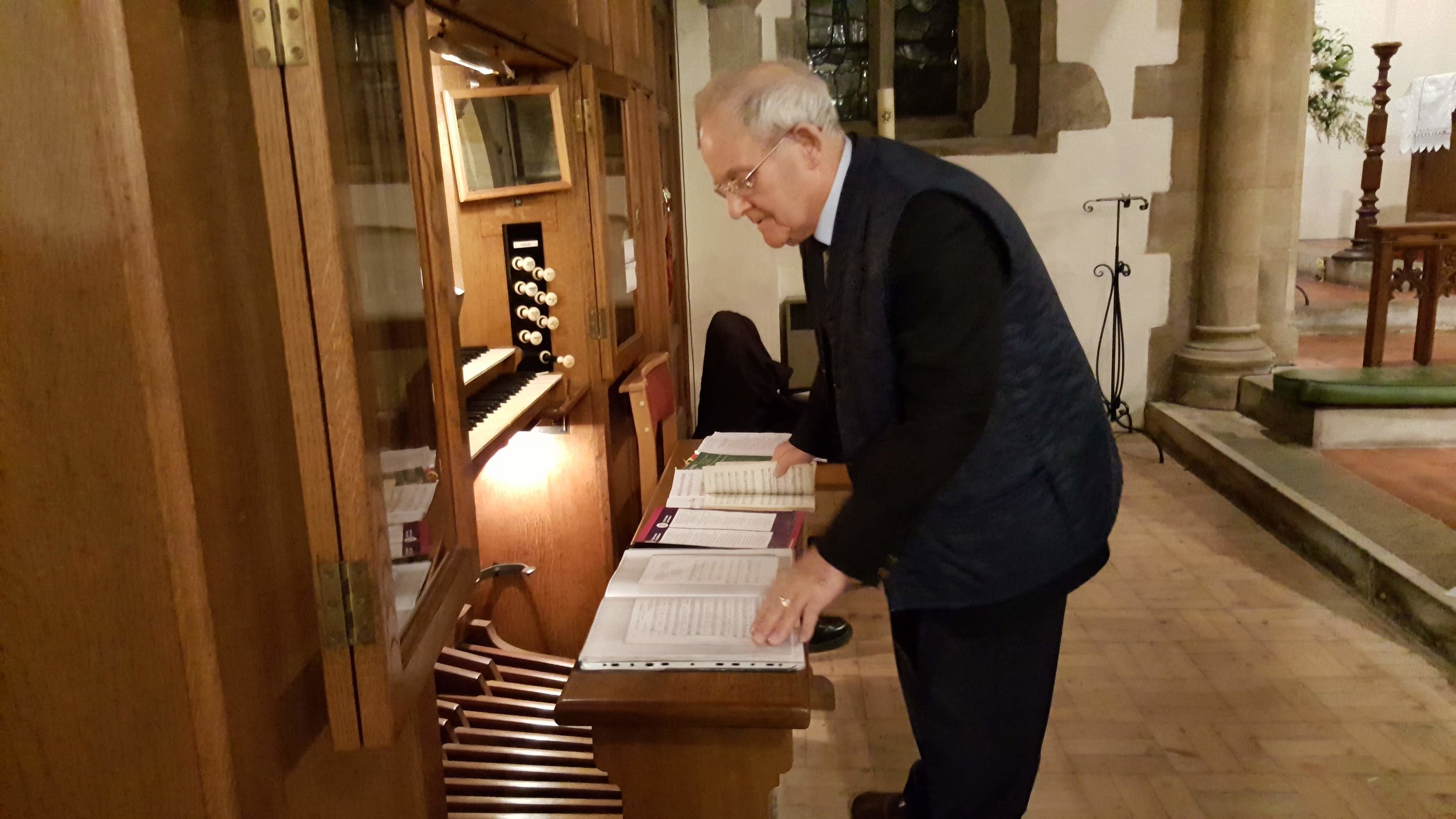
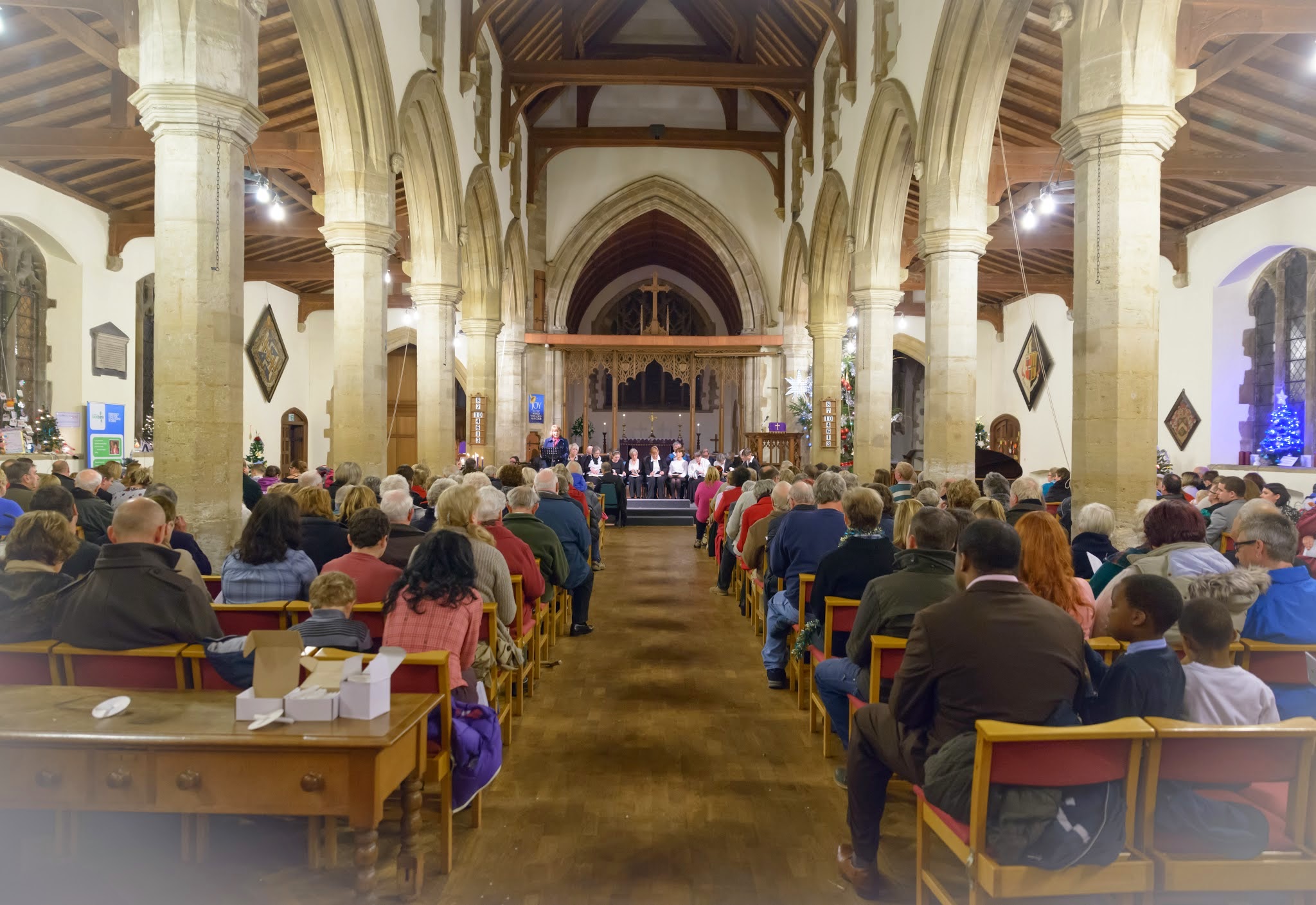
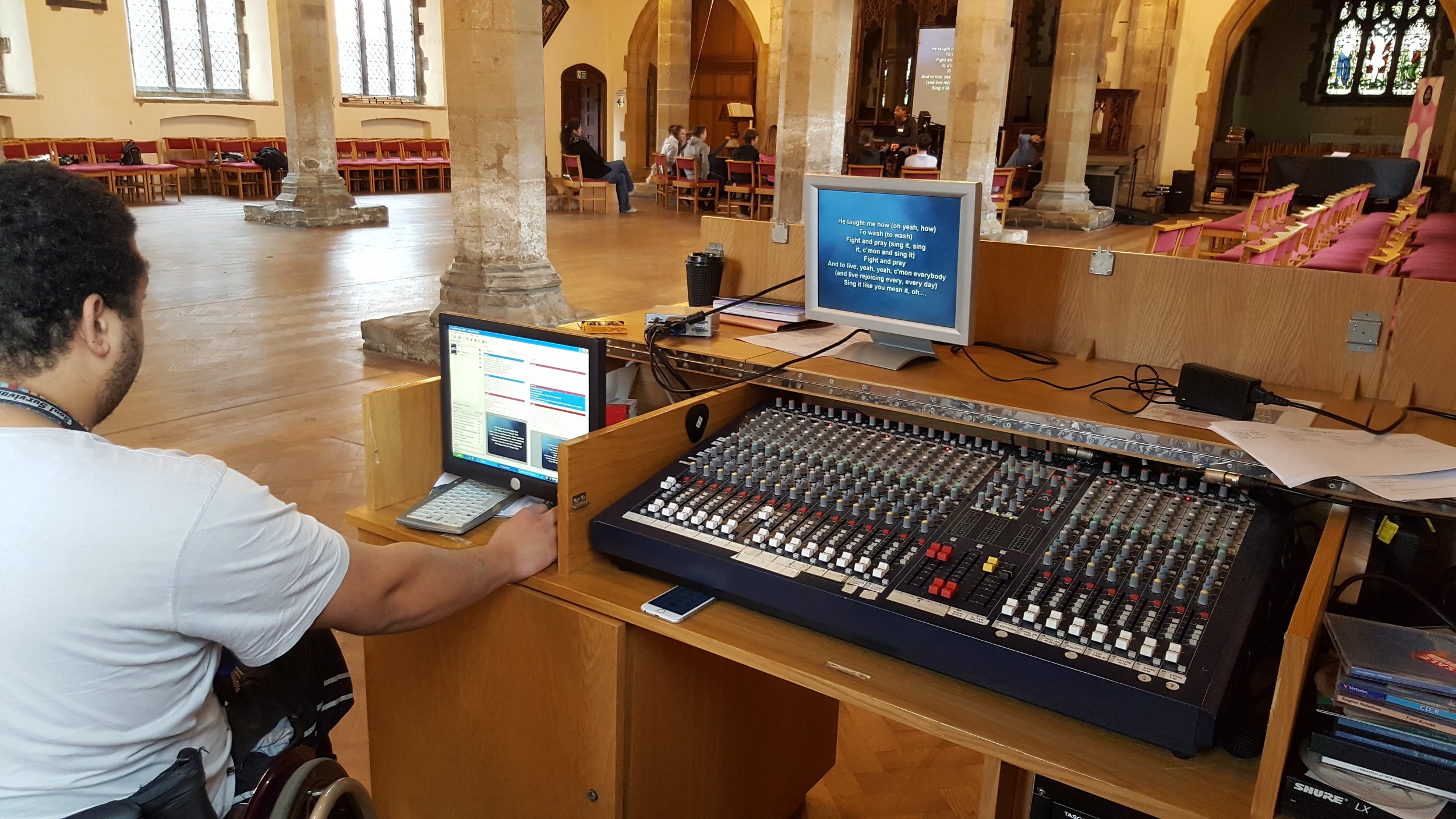
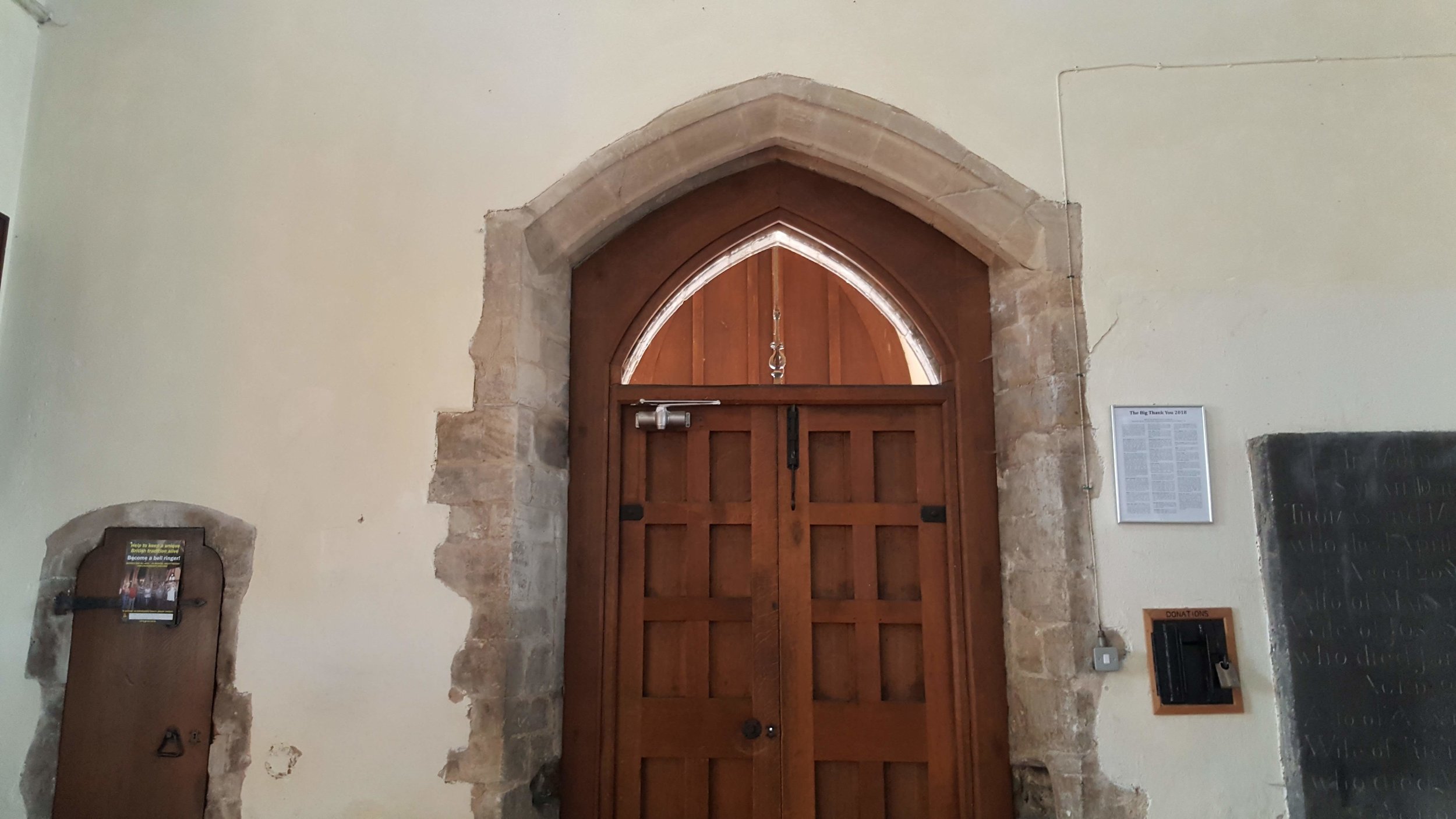
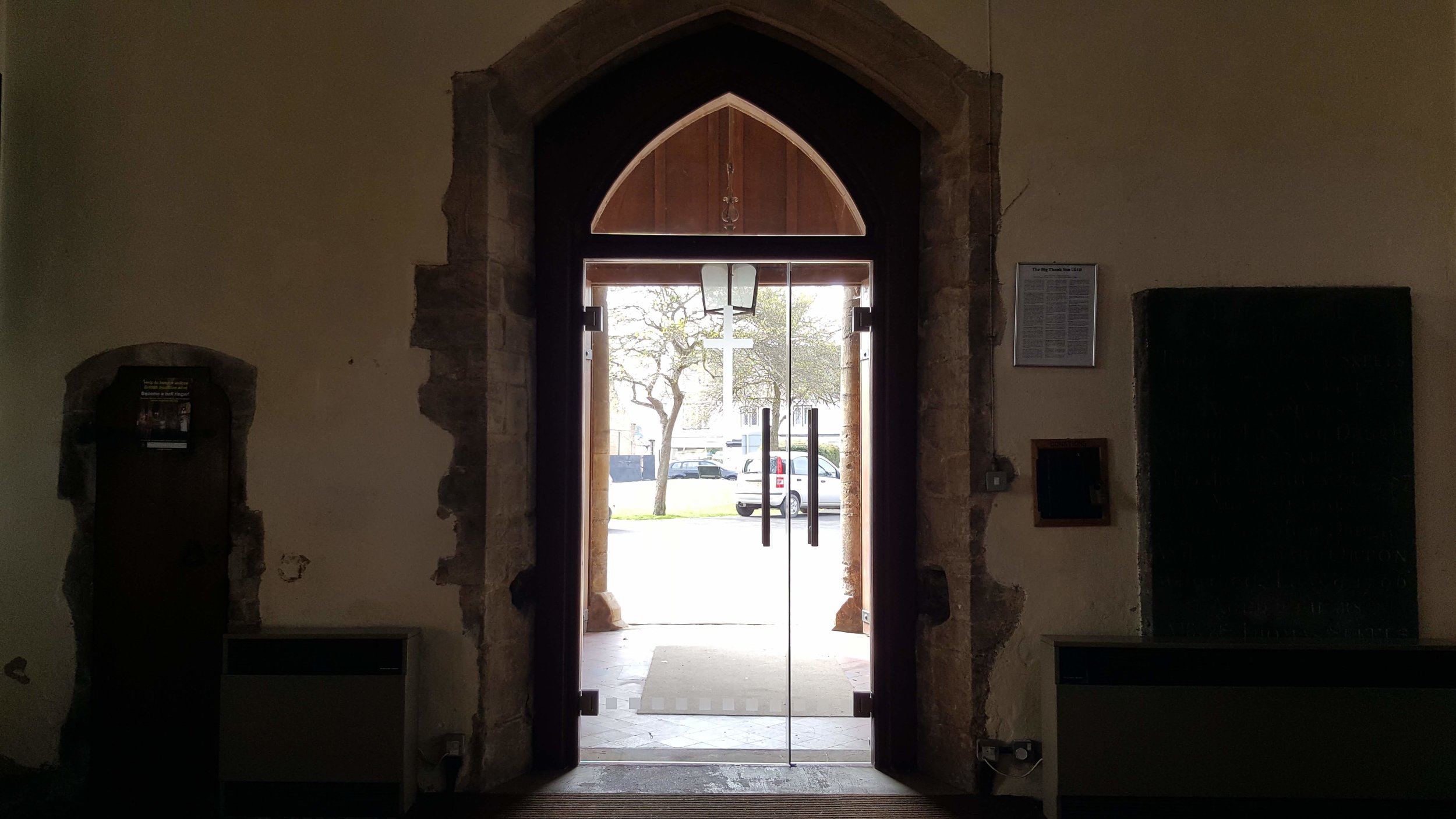
The Revd Canon David Towers arrived in 1974 full of energy and enthusiasm. He was a good walker and a keen sportsman. Revd. Towers was known to wear his rugby kit under his cassock so he could slip out to the rugby pitch in record time after officiating for weddings. The old vicarage was too large and also too expensive to update so it was sold by the Diocese of Ely and a more modest vicarage was built in what was previously known as ‘the kitchen garden’.
During this time it was decided to close the St Peter’s Mission and Horseway Mission as the buildings were falling apart. The Church hall was also torn down. Money from the land was all reinvested into the main church building, adding toilets and a new central gas fired and fan assisted heating system. Fundraising was always on the PCC agenda and everyone joined in to help with the Revd David Towers fitting the original kitchen for the Bricstan Church Room himself.
In 1980 there was a great ecumenical celebration for a millennium of Christian faith in Chatteris. All the churches joined in with special events and combined services. On the 6th of October 1982, Revd Tower’s instigated the first regular meeting of the Council of Christian Congregations to include the United Reformed Church, the Baptists, The Methodists, the Salvation Army, The Catholics and the Parish Church. Meetings were held in the Parish Church Vestry to arrange for united services, pray, plan activities together and bring concerns of both Christian Aid and the Bible Society under their umbrella. In 1994 the name was changed to Chatteris Churches Together (or CCT) with the aim to show Christians are united under Christ and ‘in many ways’ people may be “encouraged, enlivened, and opened to the love of Christ that we may bring honour to our Lord and to his name.”
Around this time, a peripatetic music teacher named Guy Radcliffe and his wife Mary arrived. They ended up assisting Mr Tom Weedon by leading the choir and setting up a group of hand bell ringers. Regular concerts were held inside the church. These were very well attended and all helped to raise much needed funds for the upkeep of the church. Members took out subscriptions and later formed into the Chatteris Music Society.
The Revd Chris Myhill arrived in 1987 with his wife Val arrived with their two children, Jennifer & Matthew and they lived in the current vicarage. Revd. Myhill was passionate about Christian education and expanded the schools’ work, taking assemblies and lessons at Kingsfield and Glebelands primary schools. He also ensured that over £60,000 was raised to further restore masonry particularly of the tower so that the bells and bell-frames were rehung and improved. A suitable meeting space was needed for Sunday school, Toddler Groups, and other church community activities. The Bricstan Room was added in 1988 and later extended into the present day Bricstan Hall with the funding provided by a grant from Sure Start in 2004. It was named after the miracle man from the 12th century.
Shortly after his arrival, The Revd Chris became the Chair for the Chatteris Churches Together (CCT). The Catholics and Salvation Army continued to play their full part but the West Park Street Baptists, and the New Road Methodists joined Emmanuel United Reformed Church in 1990 to become one church. Youth meetings were regularly held at the Vicarage so Chris instigated a fund to hire a Youth Worker (which later became the CCT Youth Worker Trust). He personally promoted and engaged with the children’s Holiday Club, prayer walks, Christian Aid Collection, and joint services of worship several times a year. During his time, the Catholics were invited to use the Church building for Sunday services of Mass. The Alpha course was introduced and led by Chris to help the people of Chatteris explore their own personal Christian faith. Courses for bereavement and baptism were also offered.
In September 2002, Chris died from cancer. The funeral was held in the church and the new Bricstan Hall was dedicated to his memory. During Chris’ illness, and afterwards, the Church Wardens, Philip Hammerton and Gerald Setchfield, took responsibility for the church ensuring that both the building and the pastoral needs of the people were well looked after.
The church floor had been resealed in 1999. However, in 2006 it was found to be subject to wet rot and had to be completely replaced with new oak blocks at a cost of £80.000. A new BOSE sound system was installed in 2006 for both speech and music, including loop system cd player and audio visual inputs for recording and projection. In 2018 the heavy inside oak door was removed from the entrance and replaced with glass doors, improving disabled access and allowing people to see inside the church. The heavy door was reinstalled inside the northwest porch, opening another entrance. Wifi was installed and, following two incidents of lead theft, a roof security system with 24 hour monitored motion detecting CCTV cameras were installed in 2019. The Bricstan Hall was expanded and redecorated with help from a community grant from AMEY.
Responding to Crises
During this time, growing numbers of people were turning up to the Vicarage for food handouts before Church Warden, Alison Doulton, agreed to set up the Food Bank. It was first located in the vestry and later in the Bricstan Hall with a capable team of volunteers working inside the church. A year later, it came under the umbrella of Trussell Trust Ely Food Bank. In 2024 the Ely Trussell Trust decided to relocate the Food Bank to the Salvation. Chatteris Essentials has been set up in its place so we can continue to support the destitute.
On Sunday 22nd March 2020, Mothering Sunday, in accordance with government regulations and the Bishops’ guidance, Church buildings were closed across the UK. Here in Chatteris, funerals were moved to the crematorium. Weddings were postponed. The Church Wardens, Juliette Brown and Chris Downs, responded quickly to the changing guidance. Within the week, ‘Home Packs’ were prepared and sent out with Bible reading notes, prayers and worship resources. Vulnerable individuals were identified for follow up with weekly phone calls by our parish Nurse. Easter 2020 services were recorded and made available on Youtube until we had the equipment and skills to provide livestream. All PCC meetings, support groups and gatherings moved online including the Alpha course, the Prayer Course and Bible studies. On the 12th July 2021, the church was reopened for supervised private prayer with facemasks and handgel required. Chairs were set two meters apart.
A second complete lockdown began on the 5th November and lasted until 2nd December 2021. The building was closed for all activities except the Food Bank which was a lifeline for many in our town. Chairs were moved out of the nave and tables set out to hold all the food that was needed. The vicar packed food parcels while Susan Jude took phone calls and made doorstep deliveries. The Christmas Carol service was held outside on the church drive and the road with about a hundred in attendance. On the 23rd of January 2021, due to exceptional personal circumstances, a wedding was permitted to take place and five people were present. All school visits and assemblies were prerecorded and sent out along with online lessons to Kingsfield and Glebelands until schools reopened on the 9th March 2021. Parents and children of all ages contributed songs, Bible readings and prayers as everyone pulled together to create videos contributions which were used in our weekly services of worship. We were especially grateful for all the NHS workers within the congregation who bravely shared their stories of Christian faith on the frontlines.
In February 2022, after Russia invaded Ukraine, the church launched the Chatteris Resettlement Hub to network over 40 host families in Chatteris. providing Ukrainians with all kinds of practical support, including English lessons during their first year.
What now?
St Peter and St Paul Chatteris remains the oldest and the largest gathering place in the centre of town. The Grade 1, historic building, is in need of constant repair. Many do not realize that the government does not help with this. The church depends on the good will of the town to make donations. Are you able to help?
The Parish Church Council (PCC) continue to work hard raising the necessary funds to maintain, protect, and develop the historic fabric of the building, making it fit for the whole community to use. This historic church now costs about £ 7000 a month for its regular upkeep including insurance, security alarms, and regular maintenance. On top of this, the PCC is currently fundraising for the following major improvements:
A new LED lighting system is needed. The current lights were put inside the church in the 1930s when electricity came into the town. The whole system needs to be upgraded and improved to meet current safety standards as well as the needs of the community (£150,000)
Ongoing maintenance and repair work including plastering and improving the inside entrance porch (approx. £ 60,000)
Please consider making your own contribution. We need your help. Click on the link below for details about how to make a donation.
